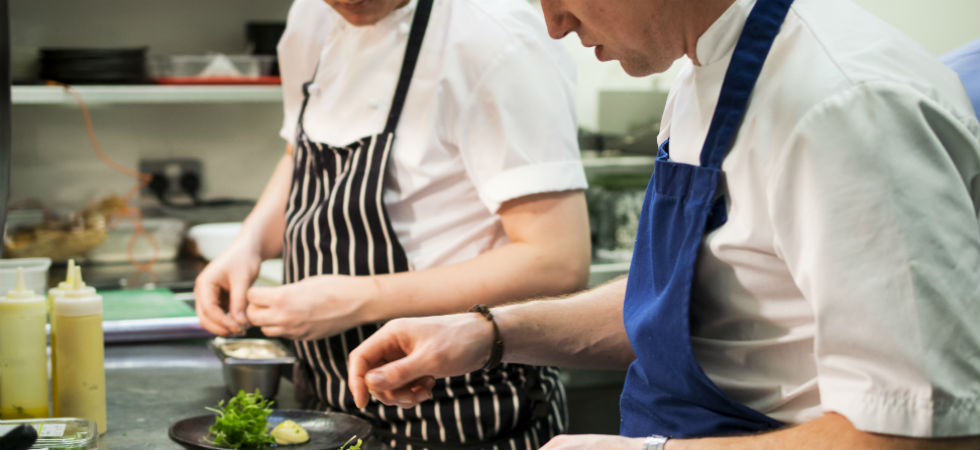From gluten- free, and paleo, to veganism, ‘clean eating’ is already one of the most talked about trends of 2017. Restaurants are quickly adapting to diner demands, but how can those looking for a healthier lifestyle stay on track when faced with a menu of mouth-watering options, and how has the rise of ‘healthy living’ really influenced what is on our plates?
‘Clean eating’ has emerged as one of this year’s biggest buzzwords. Relatively hard to define, it revolves around the idea of being more mindful of the journey food takes from its origin to your plate. ‘Clean’ foods can include those which are minimally processed or refined, as well as being as close to their natural form as possible.
No longer a social media hashtag touted by celebrities, clean eating is now one of the UK’s fastest growing markets. In turn, diners are now more educated when it comes to how different foods impact their health, and it’s having a significant influence on not just retailers, but restaurants, which are adapting to customer demand.
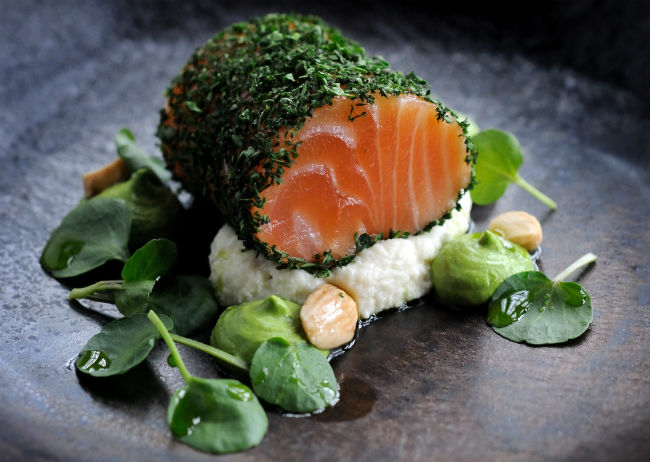
Freed from the confines of a recipe or diet book, clean eating has officially entered mainstream dining and restaurants are making a significant effort to accommodate the increase in dietary requirements. From adding the latest superfoods to the menu, and offering a selection of lighter options, to ensuring every diet is catered for, eating out is now no longer a minefield for healthy diners.
One of those restaurants is Plymouth based brasserie, Barbican Kitchen, with its Owner and Chef, Chris Tanner saying: “In just the past year, we have seen a greater increase in our customers requesting healthier options, particularly those which are vegan and gluten-free. Even some of our meat-eating customers regularly choose vegetarian dishes simply because they want to try something different, or see it as a lighter and just as nutritious alternative.”
With 47% (PwC, 2016) of diners considering it important that a restaurant offers healthy options, customers now have a clear desire to understand the relationship between food and health, whilst also being more aware of food allergies and intolerances. There has never been a better time to take a fresh approach to food as part of a healthier lifestyle. And with 32% (ComRes, 2017) of people wanting to eat more healthily this year, how can people make the right choices when dining out?
Chris Tanner adds: “The clean eating trend means that people are becoming more aware of where their food comes from, as well as the crucial role it plays in maintaining a healthy lifestyle. Being healthy is no longer associated with boring, bland food, and with a few additions, or the odd twist, even a simple salad can pack that extra, tastier punch.
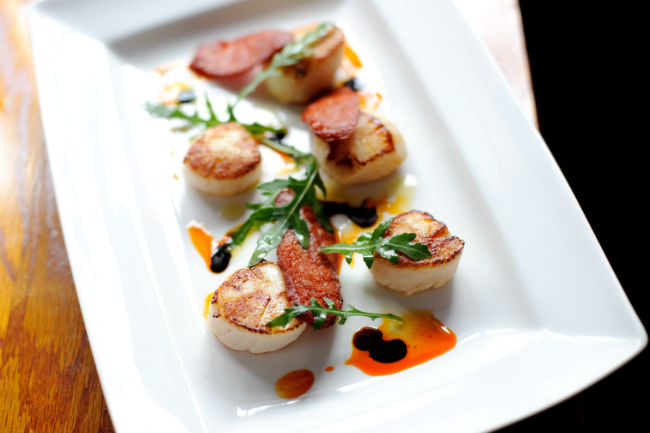
“The key to healthy eating is variety, and dining out should be an opportunity to try new foods and dishes – it’s not all leafy greens! Some of our most popular ingredients include roasted heritage carrots, Padstow kale, sesame smoked mackerel and five-spiced tofu.
“Today, restaurants need to cater to all dietary requirements, from those looking for lighter dishes to those who are vegetarian or vegan. Its growing popularity has also given us an opportunity to try a variety of ingredients which can change the taste and texture of a dish, as well having a positive impact on health. For instance, fermented foods such as miso, kimchi and sauerkraut, all help to regulate good digestive bacteria.
“Eating out is often seen as an indulgence, but it shouldn’t be hard work, and obviously, everything can be enjoyed in moderation as part of a healthy lifestyle – no one should miss out just because they have a specific dietary need!”
Chris Tanner’s Top Six Healthy Living Tips
- Everything in moderation! Just because you have decided to get healthy this year, it doesn’t mean that you should be denied all your favourite foods. Enjoy everything in moderation and have a couple days a week where you can dine out or indulge, whether it’s a mouth-watering burger, or a hearty plate of pasta – just remember not to go overboard and control your portion sizes.
- Make small changes: Sometimes it’s the small things that make a big difference. This could include things like fitting exercise into your day by walking to work, or switching certain foods for lighter alternatives. Set yourself small challenges, such as drinking two litres of water daily (we often mistake thirst for hunger!), walking a mile, getting 8 hours of sleep – it all can have a big impact on not only your health, but also your general wellbeing and state of mind.
- Cook from scratch: Cooking more of your own meals from scratch puts you in control over what is on your plate, making it easier to avoid processed foods. It doesn’t need to be Michelin Star level (it could even be as simple as making a BLT sandwich!), but use it as an opportunity to experiment with different ingredients, recipes and dishes – you may discover that you have a hidden passion for cooking in the process!
- Make healthy alternatives of your favourite foods: These are guaranteed make you feel better, and may even taste better. Freezing dishes will also ensure that you have a healthy supply of meals ready for when time is short, and even your wallet will thank you when you decide to forgo the work canteen in favour of a home cooked delicacy. Make some easy swaps such as, vegetable oil instead of butter, lean cuts over fatty meats, sweet treats for fruit, or even swap the TV for the table! You shouldn’t think of it as a ‘diet’ it’s more about changing and adapting your lifestyle for the better.
- Understand what you are eating: It’s important to understand what is on your plate, as well as what types of foods have a direct impact on your health and wellbeing. A good diet can mean getting a better night’s sleep and having more energy! Reading food labels is a good indicator of what is exactly in your food, as well as spotting any hidden ingredients – sometimes even the lighter options can contain an alarmingly high amount of sugar. Another easy place to start is by eliminating the wrong types of food from your diet, including those with a high saturated fat and sugar content.
- Don’t do it alone: It’s not fun doing things on your own, and by getting your family and friends involved you can share the journey and encourage healthier living to those around you. Get your children involved in meal times by acting as your sous chefs – it is never too early to learn how to cook! Or make a pact with a friend to incorporate exercise in your routine, it can be as simple as planning a weekly walk. Whatever you do, having someone to help motivate and inspire you will go a long way in achieving your goals.
Recipes for Success
Healthier Fish & Chips
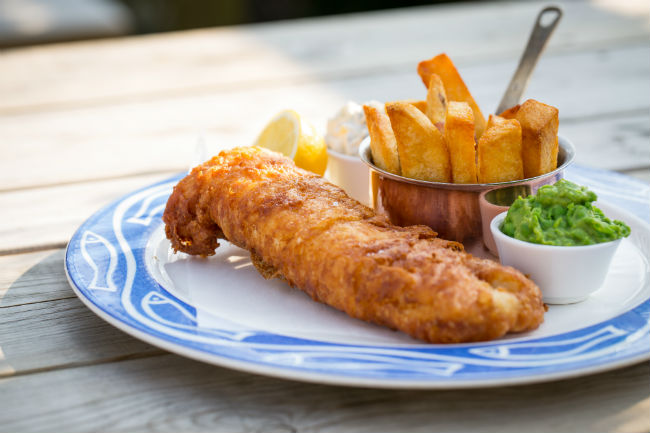
Ingredients (Serves 4)
600g x skinless boneless Lemon Sole or Plaice fillets
150g x fine polenta
2 x cloves minced garlic
2 x beaten eggs
3tbsp x seasoned plain flour
Zest and juice of 1 lemon
1 extra lemon cut into wedges for serving.
1 x tsp chopped thyme
1 x tsp chopped chives
400g x halved new potatoes
1 x tsp smoked paprika
1 x tsp crushed chilli flakes
Olive oil for cooking
8 x leaves fresh mint
250g x frozen peas
Knob of butter
Method
- Pre-heat oven to 200oc/ gas 6.
- First blanch the potato wedges for 8 minutes until just softened in boiling salted water, drain and pat dry on kitchen towel.
- Add a splash of oil to a non-stick frying pan and add wedges, cook flat side down at first to slightly colour for around two minutes. Sprinkle over smoked paprika and chili flakes, then toss everything together and pop in pre-heated oven to warm through for 5 minutes.
- For the fish, simply mix together the polenta, minced garlic, lemon zest and chopped herbs. Dust the fish fillets with the seasoned flour then dip in beaten egg and dust all over with the polenta mix.
- Heat a non-stick pan and lay the fillets in away from you cook on a medium heat for 2 minutes both sides and drain well on kitchen towel.
- To prepare the peas, blanch in boiling water for 1 minute then drain and add to blender with mint leaves and lemon juice. Blitz half first with a splash of the blanching water to achieve a liquid consistency then add the remaining peas and blitz to a chunky puree.
- Arrange in pots and put on serving plate with hot drained fish.
- Finally, drain the potatoes on kitchen paper arrange on plate and finish off with a lemon wedge per serving.
Mackerel & Creme Fraiche Potato Salad
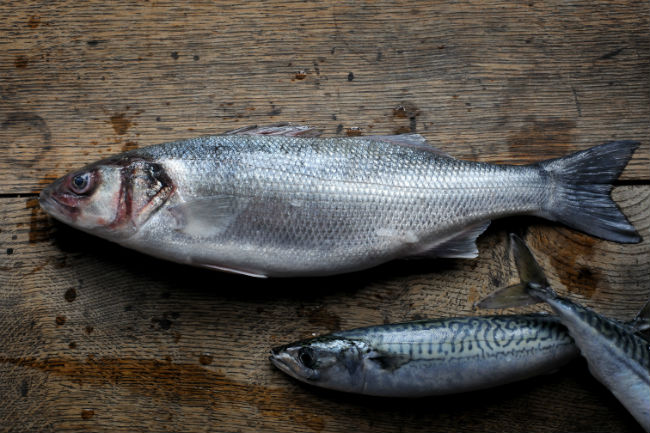
Ingredients (Serves 4)
350g new potatoes, particularly Anja potatoes, peeled and cut into 1cm dice
2 x tsp. of creme fraiche
2 x shallots, finely chopped
1 tsp. olive oil
4 x mackerel fillets, pin-boned
Crushed sea salt and freshly ground black pepper
Method
- Bring a large saucepan of salted water to the boil. Add the potatoes and boil rapidly over a high heat for 3 minutes. Remove from the heat and drain well.
- Return the potatoes to the pan, and fold in the creme fraiche, shallots and chives. Season with crushed sea salt and freshly ground black pepper.
- Heat the olive oil in a non-stick frying pan. Season the mackerel fillets with crushed sea salt and black pepper. Add the mackerel to the pan, skin side down, and cook over a medium heat for 3 minutes. Turn and cook for a further 2 minutes, then remove from heat.
- Arrange the seared mackerel fillets onto warmed serving plates. Spoon over the potato salad, and drizzle with any remaining juices to serve.












